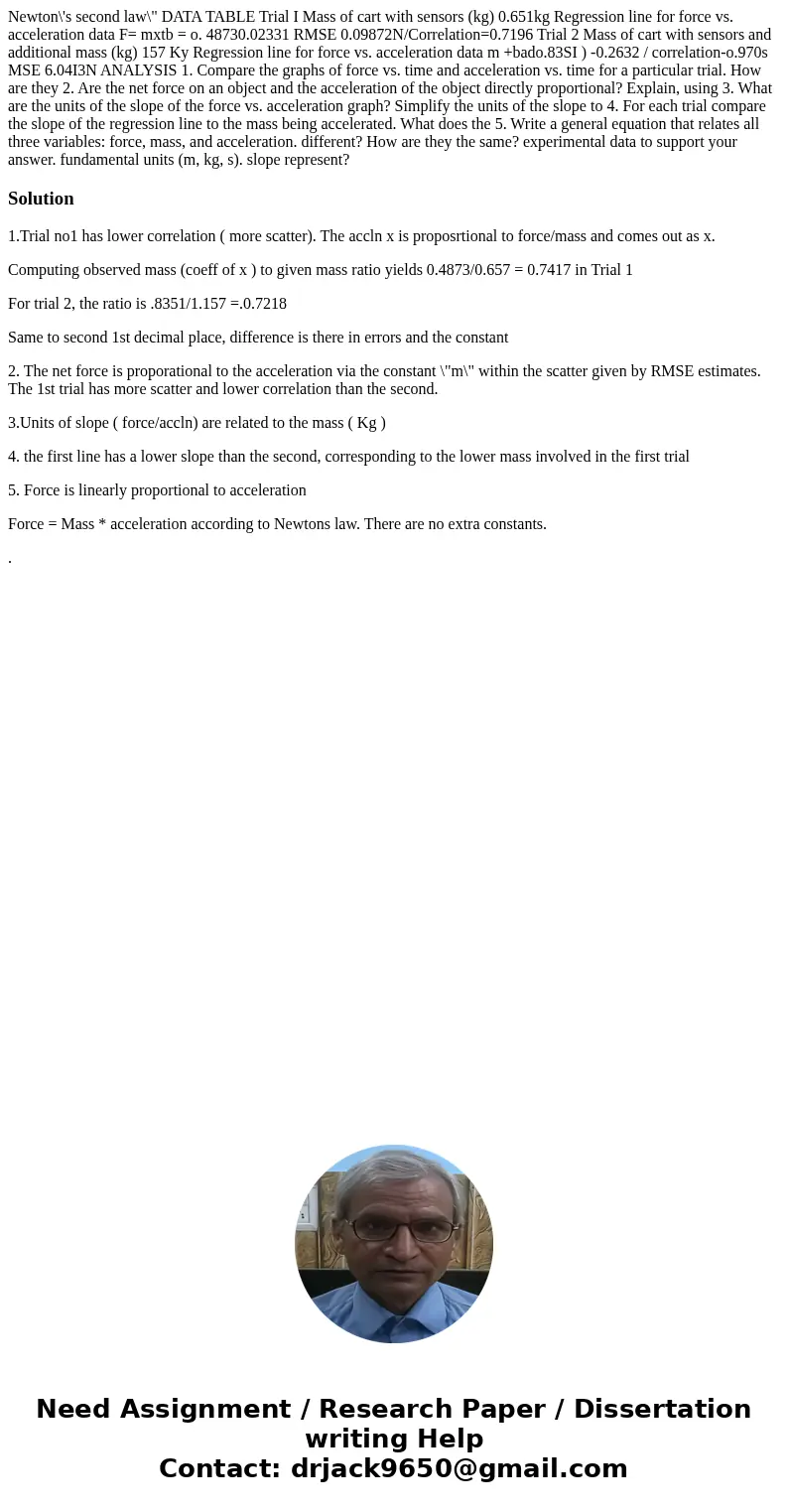Newton\'s second law\" DATA TABLE Trial I Mass of cart with sensors (kg) 0.651kg Regression line for force vs. acceleration data F= mxtb = o. 48730.02331 RMSE 0.09872N/Correlation=0.7196 Trial 2 Mass of cart with sensors and additional mass (kg) 157 Ky Regression line for force vs. acceleration data m +bado.83SI ) -0.2632 / correlation-o.970s MSE 6.04I3N ANALYSIS 1. Compare the graphs of force vs. time and acceleration vs. time for a particular trial. How are they 2. Are the net force on an object and the acceleration of the object directly proportional? Explain, using 3. What are the units of the slope of the force vs. acceleration graph? Simplify the units of the slope to 4. For each trial compare the slope of the regression line to the mass being accelerated. What does the 5. Write a general equation that relates all three variables: force, mass, and acceleration. different? How are they the same? experimental data to support your answer. fundamental units (m, kg, s). slope represent?
1.Trial no1 has lower correlation ( more scatter). The accln x is proposrtional to force/mass and comes out as x.
Computing observed mass (coeff of x ) to given mass ratio yields 0.4873/0.657 = 0.7417 in Trial 1
For trial 2, the ratio is .8351/1.157 =.0.7218
Same to second 1st decimal place, difference is there in errors and the constant
2. The net force is proporational to the acceleration via the constant \"m\" within the scatter given by RMSE estimates. The 1st trial has more scatter and lower correlation than the second.
3.Units of slope ( force/accln) are related to the mass ( Kg )
4. the first line has a lower slope than the second, corresponding to the lower mass involved in the first trial
5. Force is linearly proportional to acceleration
Force = Mass * acceleration according to Newtons law. There are no extra constants.
.

 Homework Sourse
Homework Sourse